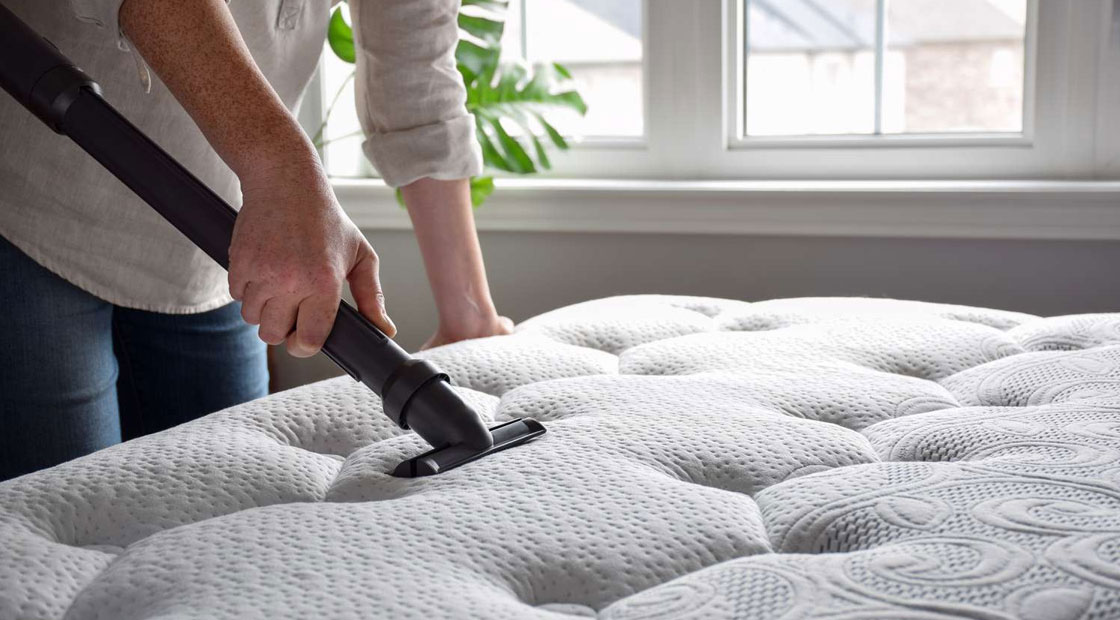
We spend about eight hours a day—or one-third of our lives—in bed, making mattress hygiene crucial for our health. Mattresses that aren't cleaned properly or frequently enough can lead to various health issues. These may range from skin problems like rashes, itching, or irritation, to respiratory issues that affect your breathing. However, many people are unsure how to properly clean a mattress that becomes dirty from dust, sweat, and bacteria. If you’re one of those asking how to clean a mattress, you’re in the right place. In this article, we’ll share tips and key points to help you clean your mattress properly and eliminate substances that could harm your health.
How Often Should You Clean Your Mattress?
The frequency of mattress cleaning can vary based on your physiology and the types of beds in your home. If you have allergies or sweat heavily, you’ll likely need to clean your mattress more frequently. Generally speaking, if you lead an average lifestyle, you should:
- Avoid making your bed right after waking up; leave it open to air out.
- Change pillowcases every two days to prevent issues like hair loss, oily scalp, and acne.
- Change your bedsheets weekly. After removing your bedding for weekly cleaning, perform a detailed mattress cleaning before putting on fresh sheets.
How to Clean a Mattress Headboard?
Mattress headboards are essential elements of bedroom sets, just as important as other furniture. Because headboards are made from materials like fabric, leather, wood, or metal, you should use a cleaning method suitable for your headboard’s material. For leather or fabric headboards, read the care instructions. For wooden or metal ones, ensure thorough drying to prevent rot or rust. Otherwise, mold or fungus may form on damp surfaces.
Why is Mite and Dust Mite Cleaning Important? How is it Done?
Dust mites, also known as mites, are tiny creatures invisible to the naked eye. They feed on human skin flakes and can be found anywhere in the house—couches, toys, chairs, carpets—but especially in duvets and mattresses. These mites can trigger sneezing, itchy eyes, nasal congestion, coughing, and even difficulty breathing. Use zippered, mite-proof pillow and duvet covers. Wash blankets, sheets, and mattress protectors in hot water (check care labels) to kill mites effectively.
How and Why Should You Clean Storage Beds (Platform Beds)?
Storage beds are popular for their storage space, but this also means they require more cleaning. Regardless of model, all storage beds must be cleaned. After cleaning the mattress, remove all items stored underneath. Use a cleaning product and water to wipe down the storage space, then rinse with clean water. Leave the storage area open for a while to air and dry completely.
How to Clean a Mattress at Home?
- Remove pillows and comforters.
- Take off dirty sheets and put them in the washing machine. Wash pillows, duvets, and blankets if needed, following their care instructions.
- While textiles are washing, vacuum the mattress top, bottom, headboard, and inside the storage bed. Use appropriate vacuum attachments.
- Use a microfiber cloth and a dusting solution to clean hard-to-reach areas.
- Mix a cleaning solution with warm or hot water in a bucket. Use a cloth to wipe the entire mattress.
- Allow the mattress to dry completely by letting it air out.
- Once dry, put on clean pillowcases, sheets, and bedding—and enjoy your refreshed mattress!
What Materials Can Be Used for Mattress Cleaning?
Mattress cleaning can involve many different products such as stain removers, liquid or powder detergents, and mattress-specific cleaners. Natural alternatives like vinegar, water, and baking soda are also effective. Whichever product you use, always rinse the mattress with a clean cloth and let it dry thoroughly afterward.
Which Natural Materials Can Be Used for Mattress Cleaning?
If you prefer not to use chemicals—whether for health reasons like asthma/allergies or personal choice—many natural options are available.
- Vinegar
Mix a small amount of vinegar in water to wipe down the mattress. Be careful not to use too much, or the smell may linger. - Baking Soda
Sprinkle baking soda on the mattress, let it sit, then vacuum it. Finish by wiping the mattress with water.
Mattress Cleaning and Hygiene: Does It Affect Sleep?
Yes, mattress hygiene is very important for sleep quality and health. Sweat, dead skin, and hair loss contribute to bacteria buildup. If not cleaned, these bacteria and mites can cause itching, hair loss, eye irritation, and breathing problems—especially in those with asthma, allergies, or nasal blockages. This leads to interrupted or poor sleep, difficulty falling asleep, and frequent waking. Regular mattress cleaning helps eliminate these symptoms and improves sleep quality.
Cleaning Under the Bed: Tools and Methods
The area under your bed is easy to overlook but just as important to clean. Use a vacuum to clean first, followed by wiping with a cloth and cleaning solution. If you prefer natural products, vinegar works well. With consistent cleaning of both mattress and under-bed areas, you’ll enjoy a healthier and more restful sleep environment.










